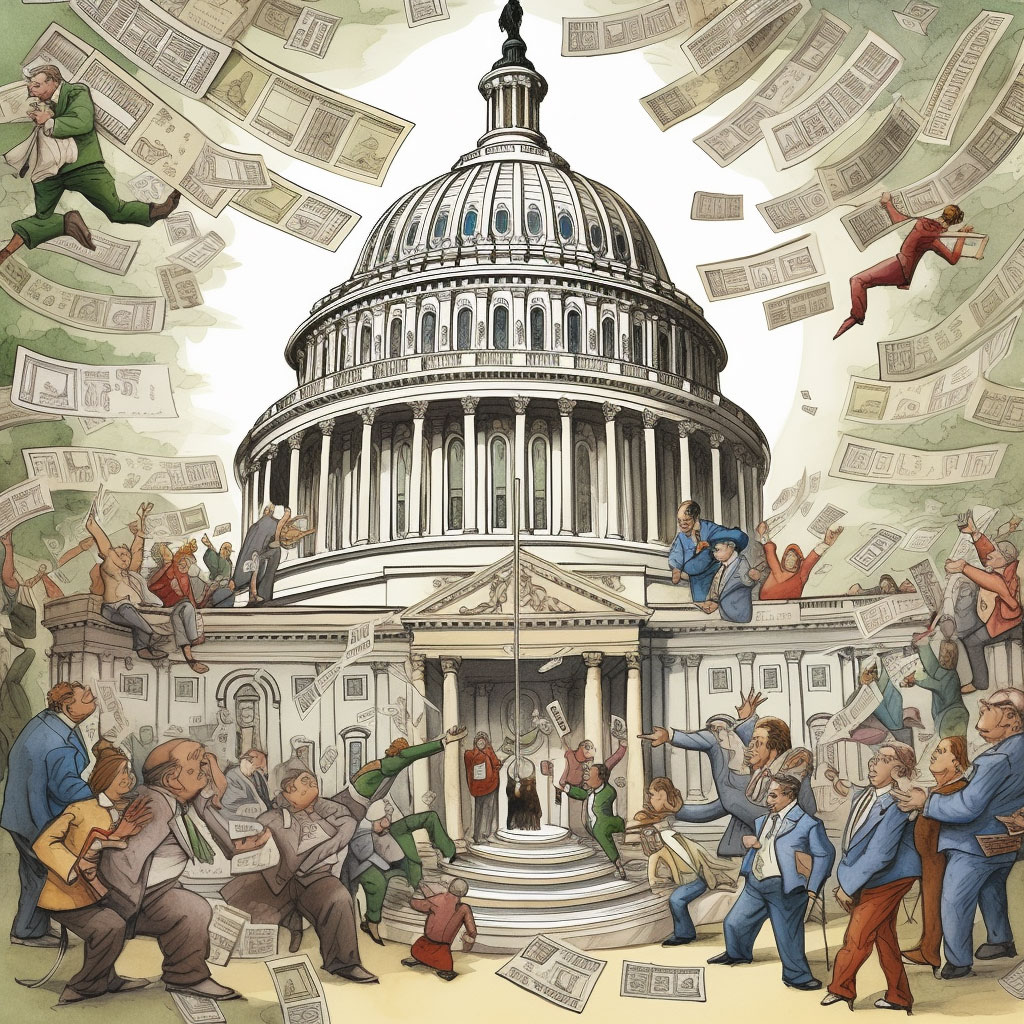The National Debt Low-Down: We’ve Been Here Before

THE GIST
Part one of this segment explained how and why both parties in congress weaponize the national debt debate to drum up fundraising dollars and media attention. This article provides an example of what can, and has worked to balance the deficit when high government spending (or low revenue) is not working for the economy, and why the question of “how much is too much” still doesn’t change anything for us, the American voter.
HOW DO WE KNOW THAT 2 TRILLION ISN’T…JUST TOO MUCH??
For only the third time in history, our federal deficit for this year is sitting at almost 2 trillion dollars. The previous two times this happened were both during the Covid 19 epidemic. In spite of an otherwise booming economy, the country’s GDP (gross domestic product) is massively short on being able to pay its annual debts.
The reason that we, the voting American need not get wrapped up in the arguments over “how much is too much” isn’t only due to the complexities of national debt- it’s also because…we’ve been here before.
In the 1990’s, like today, long term interest rates weren’t responding to government intervention as hoped. Then Treasury Secretary Robert Rubin believed that the economic and global conditions of the time were such that a lower debt would also lower interest rates and spur growth in the economy. He formed a plan executed by the bipartisan cooperation of President Bill Clinton and Speaker Newt Gingrich, which both increased taxes on the rich AND cut some of what is called non-defense discretionary spending. The result effectively eliminated the national debit, causing interest rates to drop and the economy to boom.
As is always the case, many other factors played a role in the success of Rubinomics. But it would be hard to argue that the fiscal policy didn’t play a central role in accomplishing its goals. Yet, in spite of this road map, our congress today remains stubbornly in two camps: The GOP is unwilling to tax the rich, and the Dems are unwilling to allow any cuts to social programs. As a body, they are unwilling to execute either of the two main tools in Rubinomics, which together successfully obliterated the debt in the 1990’s.
It’s important to point out that while taxing the rich could have a profound impact on national debt, dropping non-defense spending likely would not, at this point in time. This is because NDDS (Non-Defense Discretionary Spending) has already been dropping since 2010, and is likely to be only 3.3% of GDP in 2023.
OUR WORK DOESN’T CHANGE
There is no doubt that the average American life can be profoundly affected by shifts in the economy, and sometimes those shifts are greatly affected by fiscal policy, which includes the national debt. However, because the trend in congress today is to use an absurdly simplified representation of the issue for their own gains, and because they are unwilling to compromise, there are only three, main points to keep in mind regarding our national debt today:
- Over the past few decades Congress has increasingly weaponized the national debt in order to drum up attention, funding, and votes, rather than to exercise known solutions.
- At those times when the national debt is negatively affecting the economy (or is forecasted to), congress has the tools to fix these problems.
- When congress decides not to use those tools, you can bet it has everything to do with money and power. In today’s politics that means protecting the tax cuts for rich donors. Which takes us all right back to the same mission we have for every other issue in Congress: get…the…money…out!!!!! Only with dirty money out of our elections can we get nonpartisan, well intentioned representation in Washington!